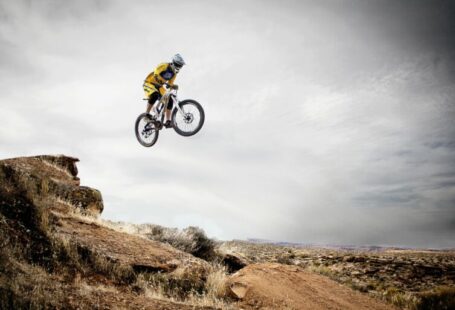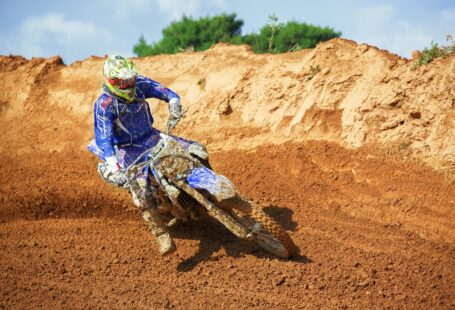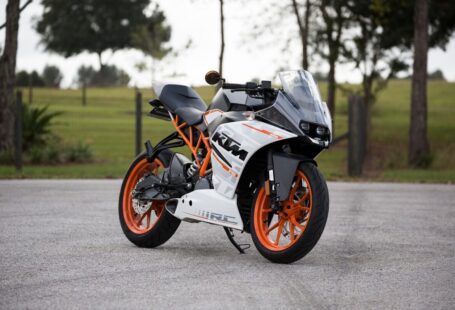A century ago, Americans fell in love with speed. While the Wright Brothers flew overhead and Model T’s rolled off Henry Ford’s assembly line, the new sport of motorcycle racing began drawing large crowds bent on celebrating a piston-powered future.
The Hendee Manufacturing Company introduced the 1.75-horsepower, single-cylinder Indian in 1901. Harley-Davidson followed in 1903. Inevitably, racing ensued. Early contests were held on horse-racing ovals and bicycle velodromes, but around 1909 wooden tracks built specifically for cars and motorcycles began to appear in Los Angeles and then elsewhere.
It was in 1911 that a livery worker named Ashley Franklin Van Order moved from Illinois to Southern California so he could ride his motorcycle year-round. Van Order took a job selling Harley-Davidsons and began riding competitively, but his racing career was cut short soon afterward by an accident, followed by an ultimatum. “His wife, Lilly, told him that if he ever rode again, she was out of there, ” says Van Order’s grandson, Jim Bolingmo Sr., a retired professor of science and math. Van Order turned to photography, and the images he amassed from the mid-1910s through the 1920s—his own and possibly others’—constitute the most complete and compelling visual record of early motorcycle racing.
The races must have been spectacular for people who were accustomed to thinking of horsepower in terms of actual horses. The bikes were designed to run fast, and that was about it: they had to be towed behind other motorcycles to get them started, and they had no brakes. The tracks, called motordromes, came in various sizes—a circuit of a mile and a quarter occupied the current site of the Beverly Wilshire Hotel in Beverly Hills—and were made of lengths of 2-by-2 and 2-by-4 lumber with rough-cut surfaces. The turns were severely banked, allowing riders to reach speeds of more than 100 miles an hour. Crashes were frequent and horrific—riders who went down faced being impaled by splinters—and often fatal. Spectators shared in the risk: at many motordromes, they peered down from the lip of the track, in harm’s way. On one particularly lethal day in 1912, several observers—from four to six, accounts vary—were killed along with Eddie Hasha and another rider at a motordrome in Newark, New Jersey, when Hasha lost control of his bike and slammed into the crowd.
Yet people flocked to the races at board tracks from Denver to Milwaukee to Long Island. “Photography is great for documenting things like this, and great photography is better than just snapshots. And Van Order was much better than just a snapshot photographer, ” says Charles Falco, a professor of optical sciences and physics at the University of Arizona and the co-curator of “The Art of the Motorcycle, ” an exhibition that broke attendance records at the Guggenheim Museum in New York City in 1998. Falco says he included a Van Order image in the exhibition to give audiences a sense of the thrill of board-track racing. The action photos are remarkable, given that they were shot on relatively slow-speed glass negatives, and the portraits endure as graceful studies of youthful ardor. In his work, the sport’s stars—such as Albert “Shrimp” Burns (who died in a 1921 crash in Toledo, Ohio), Eddie Brinck (who was killed in a race in Springfield, Massachusetts, in 1927), Ray Weishaar (a 1924 casualty in a race in Los Angeles) and Ralph Hepburn (who survived the motordromes but died trying to qualify a car for the 1948 Indianapolis 500)—remain lords of the boards.
By the mid-‘20s, the sport began to lose its appeal. Perhaps the novelty wore off; certainly the carnage was appalling. Newspapers began referring to motordromes as “murderdromes, ” and local governments closed some tracks. Race officials and the motorcycle manufacturers that sponsored racing teams tried to implement measures to slow down the bikes, but that went nowhere. By the early 1930s, board-track motorcycle racing had become a footnote in motorsport history, and Van Order’s career as a photographer was over. He wrote a column about the old days for Motorcyclist magazine and founded a club called the Trailblazers, whose sole purpose, says Bolingmo, was to get the surviving board-track racers together once a year for a dinner. Van Order continued his column through the early 1950s, when declining health forced him to stop.
His glass-plate negatives remained in a box for most of those years. He made copies of many of the images on modern film shortly before he died in 1954, at age 68, and the material passed to his daughter. In 2000, Van Order’s great-grandson, Jim Bolingmo Jr., had many of the photographs digitally restored with the idea of selling fine-art prints, but that plan was put on hold when he died at age 49 of brain cancer in 2003. Today the original negatives and restored images reside with Jim Bolingmo Jr.’s widow, Sharon Con—the last links to a little-known photographer and a time when people were entranced with the idea of going faster than they had ever gone before.
David Schonauer is the former editor in chief of American Photo and has written about visual culture for several magazines.
A.F. Van Order stopped racing after a 1912 crash and picked up a camera, haunting venues such as Ascot Speedway near Los Angeles.



